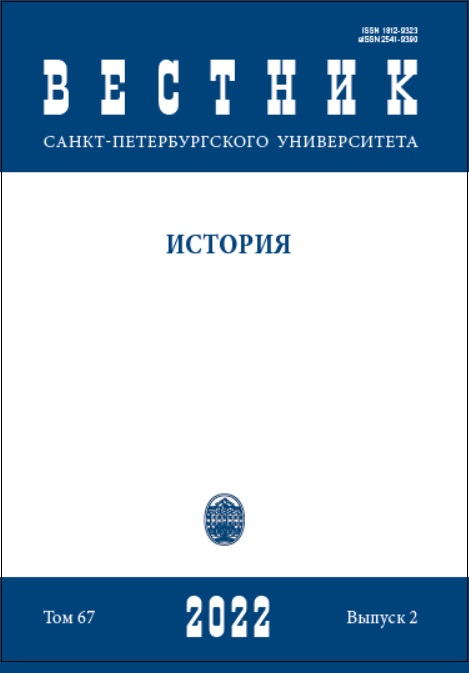The Stanjevići Monastery as a Source of Russian Influence in Montenegro
DOI:
https://doi.org/10.21638/11701/spbu02.2022.208Abstract
The connections between Montenegro and Brda and Russia go back to the second half of the 16th century. During the reign of Ivan IV (1533–1584), the monk Theodore and the dukes from Piper, Drobnyak, and Rovac – Vule Bozhidarev, Ivan Perkov and Stanko Radetin – went to Russia for help. The first official ties with Russia were established at the end of the 17th century. They had been especially tense since 1711 when Peter the Great sent a letter to Bishop Danilo. This initial stage of relations between Montenegro and Russia developed in the context of the slow formation of state power and the constant struggle with the Turks. Relations with Russia, the help received from it, the advice and instructions of Russian envoys had a very strong influence on the construction of state power in Montenegro. The connections established at that time determined the historical course of close ties with Russia, fateful and salvific for the entire history of Montenegro. During the time of Metropolitans Savva and Vasilii, these ties deepened and strengthened. Empress Elizabeth accepted bishop Sava as the «master» of Montenegro. Metropolitan Vasilii also knew that the only salvation for Montenegro was its closest ties with Russia, and even persuaded Russia to take Montenegro under its protectorate. Thanks to Metropolitan Vasilii, the Stanjevići monastery became a nursery for Russian patronage. Following the example of their predecessors, Bishops Peter I and Peter II maintained close ties with Russia and their people, and the Stanjevići monastery played an important role in these relations during the 18th and first three decades of the 19th centuries.
Keywords:
Stanjevići monastery, Russia, Montenegro, metropolitan, bishop, emperor, empress, relations, wars
Downloads
References
References
Downloads
Published
How to Cite
Issue
Section
License
Articles of "Vestnik of Saint Petersburg University. History" are open access distributed under the terms of the License Agreement with Saint Petersburg State University, which permits to the authors unrestricted distribution and self-archiving free of charge.





